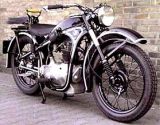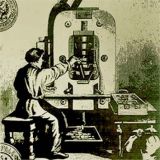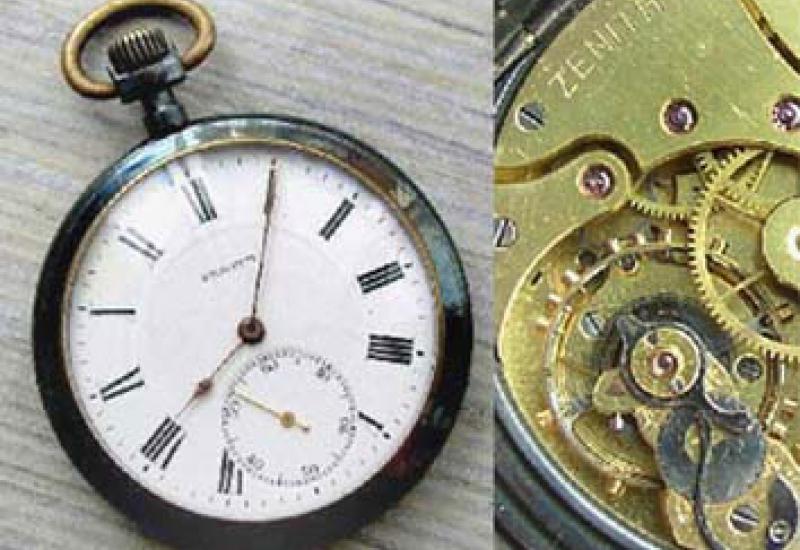Often from the media, we learn that such and such customs arrested the collection of cultural values, which would take over the state border of Ukraine. Here I must say that the cultural values are not only written, visual, film, photo, sound things, but the so-called real.
These objects are made by man and have some utility. They are classified on the material - wood, glass, ceramics, fabric, leather, horn, bone, metal, stones, including precious; on a functional purpose - weapons, numismatics, stamp collectors, faleristics, archaeological, natural, decorative attractions, musical instruments, vehicles, etc. This is the adopted system of the Ministry of Culture and Tourism of Ukraine.
 Technical articles of interest to collectors, referred to as arts and crafts sites. Until recently, their expertise, as cultural values, was made by museum experts. But they are not enough qualified to give an assessment of the things from the scientific point of view (relevance , priority, technical memo).
Technical articles of interest to collectors, referred to as arts and crafts sites. Until recently, their expertise, as cultural values, was made by museum experts. But they are not enough qualified to give an assessment of the things from the scientific point of view (relevance , priority, technical memo).
The situation in the area of expertise of Cultural Property in Ukraine has changed significantly with the creation in 1998 of the State Polytechnical Museum. Order № 647 dated November 15, 2002 to the Ministry of Culture and the Arts of Ukraine the State Polytechnic Museum NTUU "KPI" was included in the list of public institutions entitled to the state examination of vehicles as the cultural values. March 21, 2006 The Ministry of Culture and Tourism of the order № 138 secures to the museum of the state examination of weapons and firearms, monuments of arts and crafts.
Note that the State Service Control the movement of cultural property across the state border of Ukraine did not expect adoption of these orders, and sent citizens and institutions to the State Polytechnic Museum for the examination of objects of technology.
The first object of technology, undergone the expertise of the museum, was a motorcycle brand BMW. It was November 1, 2002. Since State Polytechnic Museum performed more than 100 state examinations objects technology in their cultural, historical and scientific value, including in 2006 - 50 units.
 Each subject served for examination in the bulk is a "witness" of the appropriate technical era.
Each subject served for examination in the bulk is a "witness" of the appropriate technical era.
Mosaic art items that pass through the museum includes vintage lamps, samovars, radios, phonographs, clocks (wrist, pocket, wall, mantel), vehicles (cars, motorcycles, locomotives, military equipment), models of small arms and the like .
In November 2006, the museum even made expertise of a mechanical press for coinage company Shuler (Germany) Model PR / M / 20, which was made in the late XIX - early XX century. Press (dimensions: height 230 cm, width - 180 cm, depth - 140 cm )was imported into Ukraine as a gift of the Austrian Mint to the National Bank of Ukraine. Press PR / M / 20, joined the museum exposition of the NBU.
At the end of 2006 there came into examination a very interesting mantel clock with a twisting (torsion) pendulum, made in Germany in the late XIX - early XX century by the famous "Gustav Becker". Twisting pendulum was developed in the XVIII century by such masters as Tompion (about 1713), an Detander (1721), Camus (1722), Kware (1724). Serial production of the torque pendulum clocks was began in the 80s of the XIX century. Interestingly, the German designer Gardner, regardless of his predecessors, also invented a torsion pendulum. This idea came to him in the head as he watched the movement of the chandeliers in the temple. Gardner joined the spindle movement with a pendulum, which is a heavy weight in the form of a disk, which was suspended on a short thin ribbon. In fact, it was not at all a pendulum, but the flywheel, which makes periodic swivel rotation in the horizontal plane with an amplitude 330-3500.  By appropriate selection of the length of the tape one can be set in the period of motion of the flywheel 60 second. The design of the twisting pendulum allows very economical use of energy of the spring and the duration of the course in one hour of charging may be about 400 days. For this reason, these mechanical watches are also called "manual clock." Gardner first clock with a twisting motion of the pendulum and the spindle started to be produced in the 1870s by the German firm "Wilman and K" in Freiburg. Later, in the late 1870s they were produced by other German companies: "Gustav Becker", "August Schatz and son" in Trayberg, "Factory of the water clock" in Munich, "Brothers Yungans" in Shtrasberg.
By appropriate selection of the length of the tape one can be set in the period of motion of the flywheel 60 second. The design of the twisting pendulum allows very economical use of energy of the spring and the duration of the course in one hour of charging may be about 400 days. For this reason, these mechanical watches are also called "manual clock." Gardner first clock with a twisting motion of the pendulum and the spindle started to be produced in the 1870s by the German firm "Wilman and K" in Freiburg. Later, in the late 1870s they were produced by other German companies: "Gustav Becker", "August Schatz and son" in Trayberg, "Factory of the water clock" in Munich, "Brothers Yungans" in Shtrasberg.
In the report the expert summarizes the evidence of cultural, historical and scientific value of the object for Ukraine. Behind the scenes it is left the story of the creation and use of the subject technology, life designers and inventors involved in the establishment of a technological product that expert, if possible tracks. The weight of historical material, which the expert faces in the examination, cannot be overestimated for historians of technology.

